1. Defenition:It is a recent imaging technique
1.1. Has
1.1.1. cone-shaped X-ray beam
1.1.2. 2 dimensional detector area that rotate around the patient to acquire multiple 2D images
1.2. Data
1.2.1. The computer then collect the information into tiny cubed or voxels (typically 0.4 mm x 0.4mm ). Individual voxels are much smaller than in medical CT. The voxel sizes in newer machines are even smaller (0.15mm x 0.15mm x 0.15 mm) so improving image resolution 
1.2.2. The volumetric data is presented on the computer screen as secondary images in three orthogonal planes (axial, sagittal , and coronal ) as well as 3D images
1.2.3. Over CT ,CBCT provides also reformatted panoramic cuts, transaxial( cross section cuts)
1.3. Final Image
1.3.1. The raw digital data is composed of multiple images resembling lateral ceph. each slightly offset from one another.
1.3.2. This data is reconstructed by computer algorithm to create volumetric data.
1.3.3. Multiple projections are acquired by rotational scanning to produce volumetric data from which multi-planar images can be generated.
1.4. Detectors
1.4.1. mage intensifier tube/ Charged couple device (IIT/ CCD)Flat panel detectors have high resolution and inexpensive, but they require more radiation 
1.5. Field of View
1.5.1. Fields of view FOV FOV depend on: Detector size and shape Collimation of 1ry x- ray beam The larger the FOV the larger the voxel size, the lower the resolution.
1.6. Scanning the entire cranio-facial region is difficult because of high cost of large detectors. ➢Possible to increase the height of the FOV by using 2 scans one above the other and (stitching) the data
1.7. CBCT Multi-planar Reconstruction
1.7.1. Since the volumetric data is isotropic,means having properties that are identical in all directions ➢ Thus, data can be sectioned non-orthogonally (e.g. oblique, curved planar).
2. Advantages
2.1. Less radiation dose to the patients than CT (96 to 51% of CT)
2.2. Less expensive equipment than CT
2.3. Smaller in size than CT
2.4. Less scanning time than CT because it captures the necessary data in one rotation
2.5. Reformatted images can generate ● Panoramic ● Lateral cephalometric ● PA cephalometric ● Submentovertex
2.6. Sub-millimeter voxel resolution (0.4x0.4x0.4mm - 0.125x0.125x0.125mm). One scan contains more than 100 million voxels.
2.7. Interactive analysis for surgeries and implants 
3. Disadvantages
3.1. Poor soft tissue contrast (TMJ disc cannot be seen)
3.2. Patients have to remain stationary
3.3. Computer reconstructed panoramic images are not directly comparable with conventional panoramic radiographs.
3.4. Metallic objects produce streak artifacts.
4. Applications
4.1. Dental Implant
4.1.1. CBCT, combined with customized software, provide the necessary 3-D information. This allows determination of the optimal implant size and location considering surgical, anatomic, and prosthodontic issues.
4.1.2. Stereolythographic models of the jaws as well as surgical guides. Such models of the facial bones are used for pre-surgical treatment planning The surgical guides assist the clinician in precisely aligning the drill bits with respect to the jawbones to assure proper orientation and depth of the drill holes. 
4.2. Maxillofacial surgery
4.2.1. CBCT delineate the location, size and extension of intra bony lesion. This will give surgeon the needed information for surgical planning with ability to provide volumetric analysis of the case.
4.3. Temporomandibular joint
4.3.1. The TMJ is difficult to image with conventional techniques because of superimposition. CBCT provided valuable images of the osseous components of the TMJ such as osteophytes, erosion, fractures, ankylosis, or developmental abnormalities, as well as to evaluate the position of the condyle in the fossa in open-mouthed and closed-mouth positions. 
4.4. Orthodontics
4.4.1. CBCT providing 2D and 3D cephalometric images which is more accurate than conventional 2D cephalometric radiographs ( no magnification or parallax distortion). Distortion free panoramic reformatted image can be held without re expose the patient. 
4.4.2. Pharyngeal air way space and soft tissue relationship can be provided by CBCT. CBCT can detect teeth impaction easily.
4.5. Disease
4.5.1. Example Fibrous Dysplasia
4.6. Cleft palate
4.6.1. CBCT showed 3D relations of the defect and Cleft palate bone thickness around the existing teeth in proximity to the cleft. The volume of the graft material needed for repair could be estimated by volumetric analysis.
4.7. Endodontic application
4.7.1. Diagnosis of endodontic pathosis Canal morphology
4.7.2. Assessment of pathosis of non-endodontic origin Evaluation of root fractures and trauma
4.7.3. Analysis of external and internal root resorption and invasive cervical resorption
4.7.4. Pre-surgical planning
4.7.5. 

